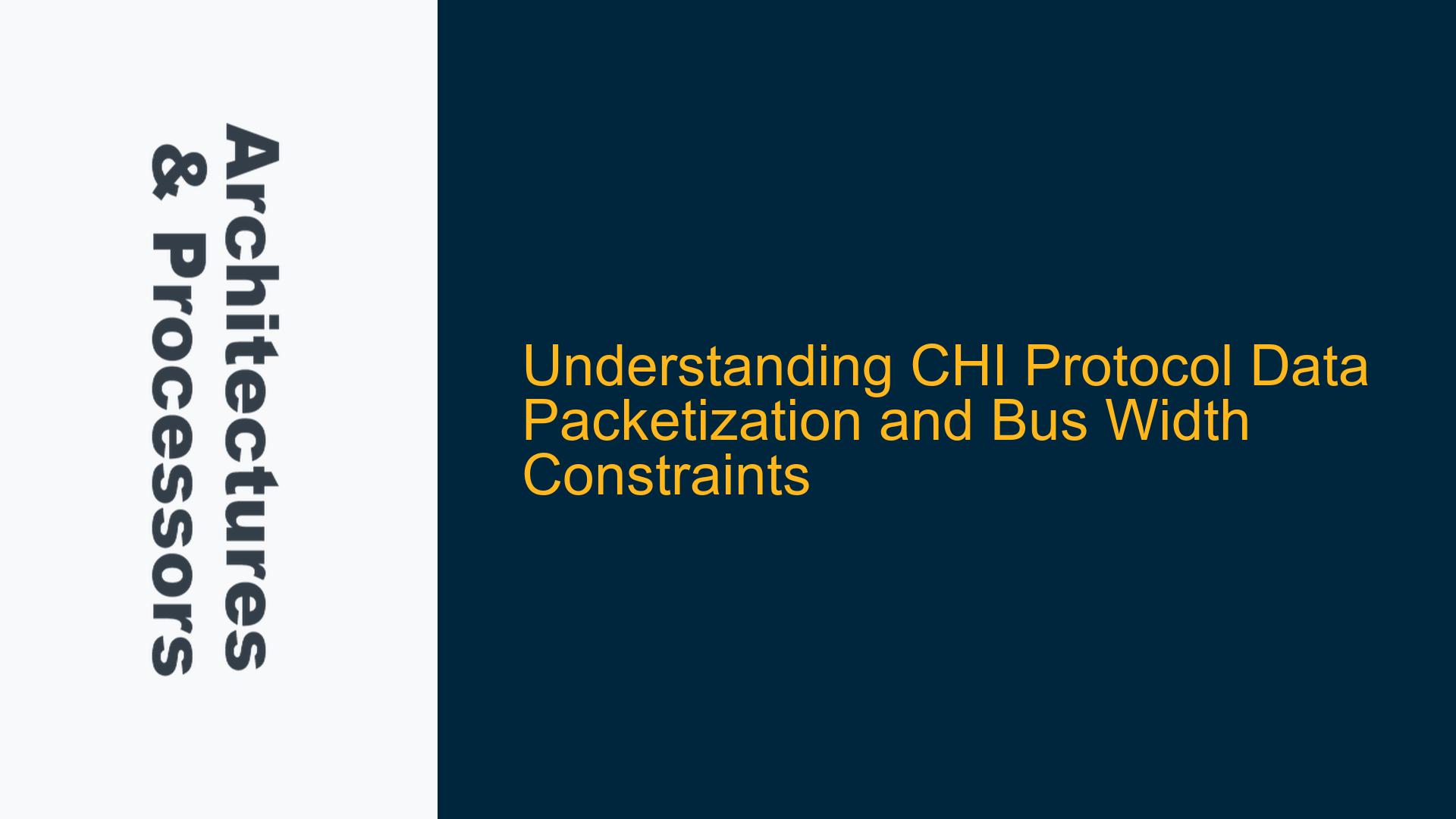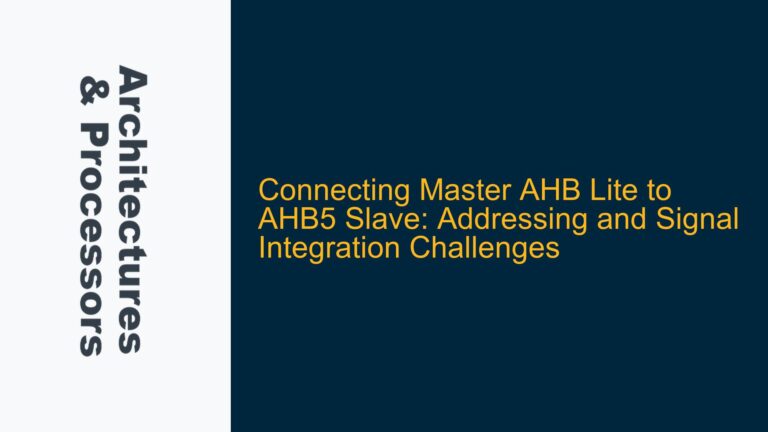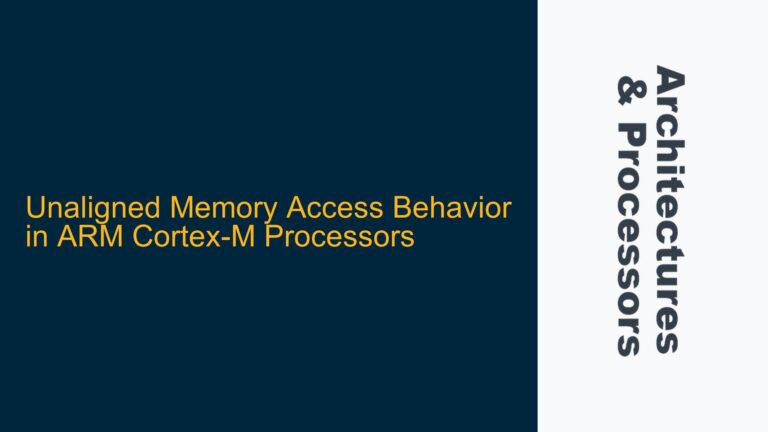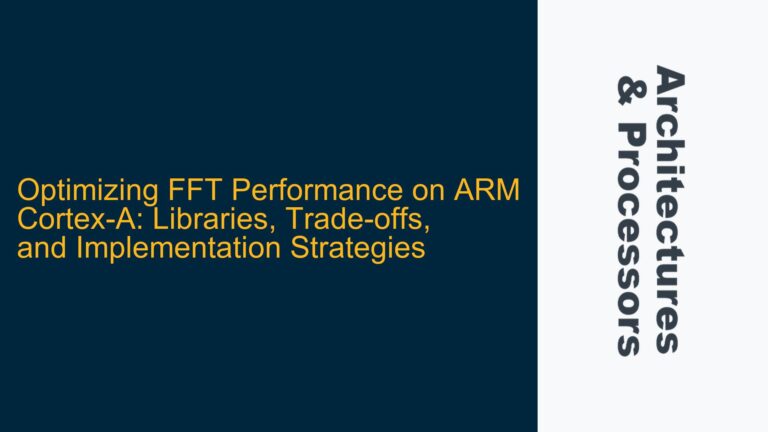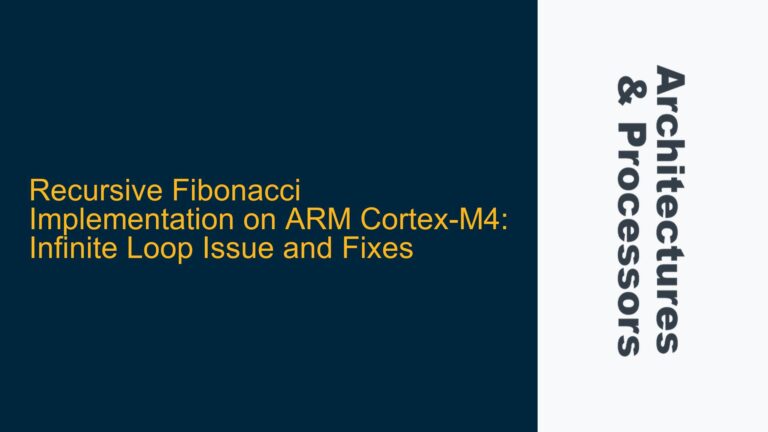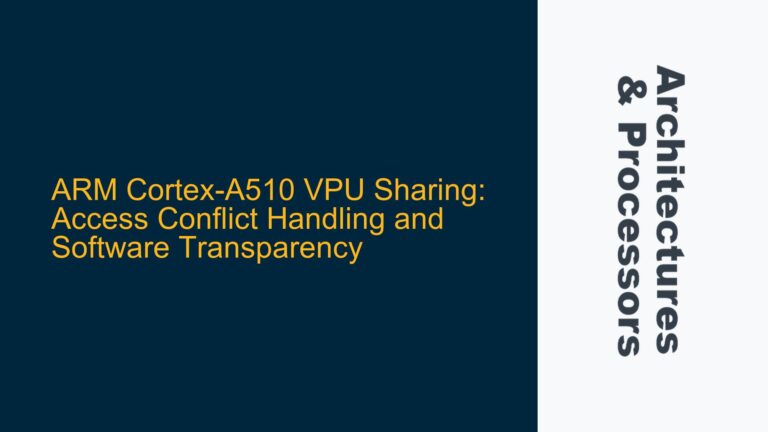CHI Protocol Data Packetization Rules and Bus Width Impact
The ARM Coherent Hub Interface (CHI) protocol is a critical component in modern ARM-based SoCs, enabling efficient communication between agents in a coherent system. One of the key aspects of CHI is its data packetization mechanism, which determines how data is segmented and transmitted across the interconnect. According to Section 2.10.4 of the CHI specification, a transaction of up to 16 bytes is always contained in a single packet. However, this rule interacts with the data bus width, leading to potential confusion when interpreting the maximum packet size.
The CHI protocol defines that the number of bytes in each packet is determined by the data bus width. For instance, when the data bus width is 256 bits, the packet size is 32 bytes, as indicated in Table 2-16 of the CHI specification. This interaction between the 16-byte rule and the data bus width can lead to misunderstandings, especially when designing or verifying systems with varying bus widths.
The 16-byte rule ensures that small transactions are efficiently handled without unnecessary fragmentation, which is crucial for maintaining low latency and high throughput in the system. However, when the data bus width is larger, the protocol allows for larger packet sizes to fully utilize the available bandwidth. This dual consideration of transaction size and bus width is essential for optimizing the performance of the interconnect.
In practical terms, this means that the maximum packet size is not fixed at 16 bytes but can scale with the data bus width. For example, a 128-bit bus width would allow for a maximum packet size of 16 bytes, while a 256-bit bus width would allow for a maximum packet size of 32 bytes. This scalability is critical for ensuring that the interconnect can handle larger data transfers efficiently, especially in high-performance systems where data throughput is a key concern.
Understanding this interaction is crucial for both design and verification engineers. During the design phase, engineers must ensure that the interconnect fabric is configured to handle the maximum packet size allowed by the data bus width. This includes setting appropriate buffer sizes, configuring the arbitration logic, and ensuring that the data path can handle the maximum packet size without causing bottlenecks.
During verification, engineers must test the system under various conditions to ensure that the packetization rules are correctly implemented. This includes testing with different data bus widths, transaction sizes, and traffic patterns to verify that the system can handle both small and large packets efficiently. Additionally, engineers must ensure that the system complies with the CHI specification, particularly in terms of how packet sizes are determined based on the data bus width.
Misinterpretation of Packet Size Rules and Data Bus Width Constraints
One of the primary causes of confusion in interpreting the CHI protocol’s data packetization rules is the interaction between the 16-byte rule and the data bus width. The 16-byte rule states that a transaction of up to 16 bytes is always contained in a single packet. However, this rule does not imply that the maximum packet size is fixed at 16 bytes. Instead, the maximum packet size is determined by the data bus width, as specified in Table 2-16 of the CHI specification.
For example, when the data bus width is 128 bits, the maximum packet size is 16 bytes, which aligns with the 16-byte rule. However, when the data bus width is 256 bits, the maximum packet size increases to 32 bytes. This scalability is necessary to fully utilize the available bandwidth of the data bus, especially in high-performance systems where large data transfers are common.
Another potential cause of confusion is the interpretation of the term "packet size." In the context of the CHI protocol, the packet size refers to the amount of data that can be transmitted in a single packet, which is determined by the data bus width. However, this does not mean that all packets will be of the maximum size. The actual packet size will depend on the size of the transaction and the data bus width.
For example, a transaction of 8 bytes on a 128-bit bus will result in a single packet of 8 bytes, even though the maximum packet size is 16 bytes. Similarly, a transaction of 16 bytes on a 256-bit bus will result in a single packet of 16 bytes, even though the maximum packet size is 32 bytes. This flexibility allows the CHI protocol to efficiently handle transactions of varying sizes without unnecessary fragmentation.
In addition to the data bus width, other factors can influence the packet size, such as the type of transaction and the configuration of the interconnect. For example, some transactions may require additional control information, which can affect the overall packet size. Additionally, the interconnect may be configured to prioritize certain types of traffic, which can also impact the packet size.
Understanding these nuances is crucial for both design and verification engineers. During the design phase, engineers must ensure that the interconnect fabric is configured to handle the maximum packet size allowed by the data bus width, while also considering the impact of other factors such as transaction type and traffic prioritization. During verification, engineers must test the system under various conditions to ensure that the packetization rules are correctly implemented and that the system can handle both small and large packets efficiently.
Implementing and Verifying CHI Data Packetization with Variable Bus Widths
To correctly implement and verify the CHI protocol’s data packetization rules, engineers must follow a systematic approach that takes into account the interaction between the 16-byte rule and the data bus width. This involves configuring the interconnect fabric, designing the data path, and verifying the system under various conditions.
The first step in implementing CHI data packetization is to configure the interconnect fabric to handle the maximum packet size allowed by the data bus width. This includes setting appropriate buffer sizes, configuring the arbitration logic, and ensuring that the data path can handle the maximum packet size without causing bottlenecks. For example, if the data bus width is 256 bits, the interconnect fabric must be configured to handle packets of up to 32 bytes.
Next, engineers must design the data path to ensure that it can efficiently handle both small and large packets. This includes designing the data path to support the maximum packet size, as well as implementing logic to handle smaller packets without unnecessary fragmentation. For example, if the data bus width is 128 bits, the data path must be designed to handle packets of up to 16 bytes, while also efficiently handling smaller packets.
During the verification phase, engineers must test the system under various conditions to ensure that the packetization rules are correctly implemented. This includes testing with different data bus widths, transaction sizes, and traffic patterns to verify that the system can handle both small and large packets efficiently. Additionally, engineers must ensure that the system complies with the CHI specification, particularly in terms of how packet sizes are determined based on the data bus width.
One approach to verifying CHI data packetization is to use a combination of simulation and formal verification. Simulation can be used to test the system under various conditions, including different data bus widths, transaction sizes, and traffic patterns. Formal verification can be used to prove that the system complies with the CHI specification, particularly in terms of how packet sizes are determined based on the data bus width.
Another approach is to use a combination of directed and random testing. Directed testing can be used to test specific scenarios, such as transactions of specific sizes or traffic patterns. Random testing can be used to test the system under a wide range of conditions, including different data bus widths, transaction sizes, and traffic patterns.
In addition to simulation and formal verification, engineers can also use hardware emulation to verify the system. Hardware emulation allows engineers to test the system in a real-world environment, which can help identify issues that may not be apparent in simulation or formal verification.
Finally, engineers must ensure that the system is optimized for performance. This includes optimizing the interconnect fabric, data path, and arbitration logic to ensure that the system can handle both small and large packets efficiently. Additionally, engineers must ensure that the system is configured to prioritize certain types of traffic, which can help improve overall system performance.
In conclusion, implementing and verifying CHI data packetization with variable bus widths requires a systematic approach that takes into account the interaction between the 16-byte rule and the data bus width. By following this approach, engineers can ensure that the system is correctly implemented and verified, and that it can handle both small and large packets efficiently.
